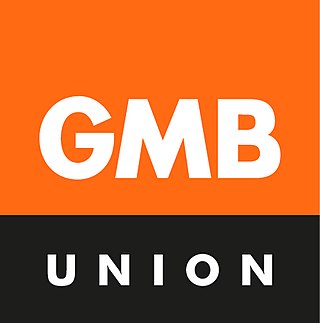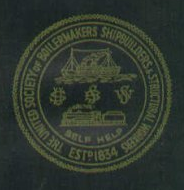Related Research Articles
In British politics, an affiliated trade union is one that is linked to the Labour Party. The party was created by the trade unions and socialist societies in 1900 as the Labour Representation Committee and the unions have retained close institutional links with it.

The GMB is a general trade union in the United Kingdom which has more than 560,000 members. Its members work in nearly all industrial sectors, in retail, security, schools, distribution, the utilities, social care, the National Health Service (NHS), ambulance service and local government.

The Ceramic and Allied Trades Union (CATU) was a trade union representing pottery workers in the United Kingdom.
Community is a British trade union which formed in 2004. The union represents workers in a diverse range of sectors, including iron and steel, justice and custodial, domestic appliance manufacturing, textiles and footwear, road transport, betting, the third sector, education and early years as well as the self-employed.

The Modern Records Centre (MRC) is the specialist archive service of the University of Warwick in Coventry, England, located adjacent to the Central Campus Library. It was established in October 1973 and holds the world's largest archive collection on British industrial relations, as well as archives relating to many other aspects of British social, political and economic history.

The General Federation of Trade Unions (GFTU) is a national trade union centre in the United Kingdom. It has 35 affiliates with a membership of just over 214,000 and describes itself as the "federation for specialist unions".
The National Association of Operative Plasterers (NAOP) was a trade union representing plasterers in the United Kingdom.

The Amalgamated Society of Boilermakers, Shipwrights, Blacksmiths and Structural Workers (ASB) was a trade union in the United Kingdom. Many of its members worked in shipbuilding, in which industry it was the leading trade union, while over time it also developed strength in engineering and construction.

The Irish Trades Union Congress (ITUC) was a union federation covering the island of Ireland.

The National Union of Hosiery and Knitwear Workers (NUHKW) was a trade union in the United Kingdom.

The National Union of Boot and Shoe Operatives (NUBSO) was a trade union in the United Kingdom which existed between 1873 and 1971. It represented workers in the footwear industry.
The Amalgamated Society of Engineers (ASE) was a major British trade union, representing factory workers and mechanics.

William Archibald Appleton was a British trade union leader.
The Amalgamated Textile Warehousemen's Association was a trade union representing workers in the textile industry in the United Kingdom, principally in Lancashire.
The Alliance Cabinet Makers' Association was a trade union representing skilled furniture makers in the United Kingdom.
The National Federation of Building Trades Operatives (NFBTO) was a trade union federation in the United Kingdom, consisting of unions with members in construction and related industries.
The National Union of Wallcoverings, Decorative and Allied Trades (NUWDAT) was an industrial union representing workers connected with the manufacture of wallpaper in the United Kingdom.

The Printing and Kindred Trades Federation (P&KTF) was a trade union federation in the United Kingdom.
The Scottish Lace and Textile Workers' Union was a trade union representing textile workers in Scotland.
The Notts Trades Council, formally known as the Nottinghamshire Nottingham and Mansfield Trades Council, brings together trade unionists in Nottinghamshire, in England.
References
- 1 2 3 4 Arthur Marsh, Victoria Ryan and John B. Smethurst, Historical Directory of Trade Unions, vol.4, pp.350-363
- ↑ Alice Prochaska, History of the General Federation of Trade Unions 1899-1980, pp.49-51
- 1 2 3 4 5 6 Cuthbert, Norman H; Amalgamated Society of Operative Lace Makers and Auxiliary Workers (1960), The Lace Makers' Society : a study of trade unionism in the British lace industry, 1760-1960, Amalgamated Society of Operative Lace Makers and Auxiliary Workers, retrieved 29 November 2018, p.97